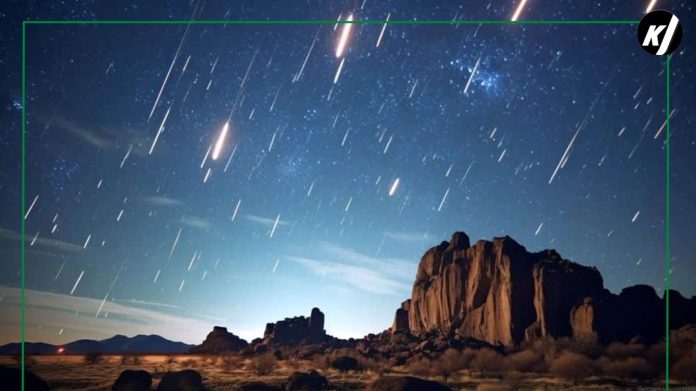The sky sparkled in the UAE late Monday night as what seemed to be hundred of shooting stars crossed the sky. The Perseids meteor shower which is expected to give between 50 to 100 meteors per hour was at its best on August 12.
Over 1,100 meteorites fell from the sky until the early part of Tuesday, if judged from the images taken by monitoring cameras of the International Astronomy Centre in Abu Dhabi.
The organizers of the Dubai Astronomy Group (DAG), which had staged a viewing session on the Jebel Jais Mountains, noted that they signed up more than 300 persons.
“This of course was due to the fact that the skies were very clear and everyone was captivated by the showery meteors on display,” the group stated.
When it comes to fireballs, the Perseids meteor shower is known to present bright shooting stars and are defined as ‘larger explosions of light and color,’ that are longer than the average meteor streak.
According to the group’s operations manager, Khadijah Ahmad, in an interview,, the phenomenon was most visible between 1am and 3am. What is more, personally, strolling around and being engrossed in the organization of the event, I was able to notice 21 shooting stars.
Annual shower takes place when the Earth is crossing the debris trail which was left by the comet Swift-Tuttle.
“This debris burns up in the Earth’s atmosphere and causes pale streaks of light in the night sky This is because the meteors seem to come from the constellation known as Perseus and hence are called Perseids”, the operation’s manager further stated.
There’s more for those who missed
For those who enjoyed or missed the spectacular show yesterday evening, here is good news; there is another show planned in just a couple of days.
“The Mars and Jupiter conjunction will be on August 15, and it will be visible at 2 am And then the Supermoon will be on 19 August” mentioned Khadijah.
Corresponding to the DAG, Jupiter and Mars have an “extremely close” pair-up called a conjunction.
“They’ll appear just a third of a degree apart, which is less than the width of the full Moon.”
A supermoon occurs when the moon is closest to Earth in its elliptical orbit, making it appear larger and more brilliant than usual.
If you want to catch a meteor shower, you must wait a few months.
“The Geminids on December 14 will be the final meteor shower of the year; as always, it will be a magnificent celestial show.”

